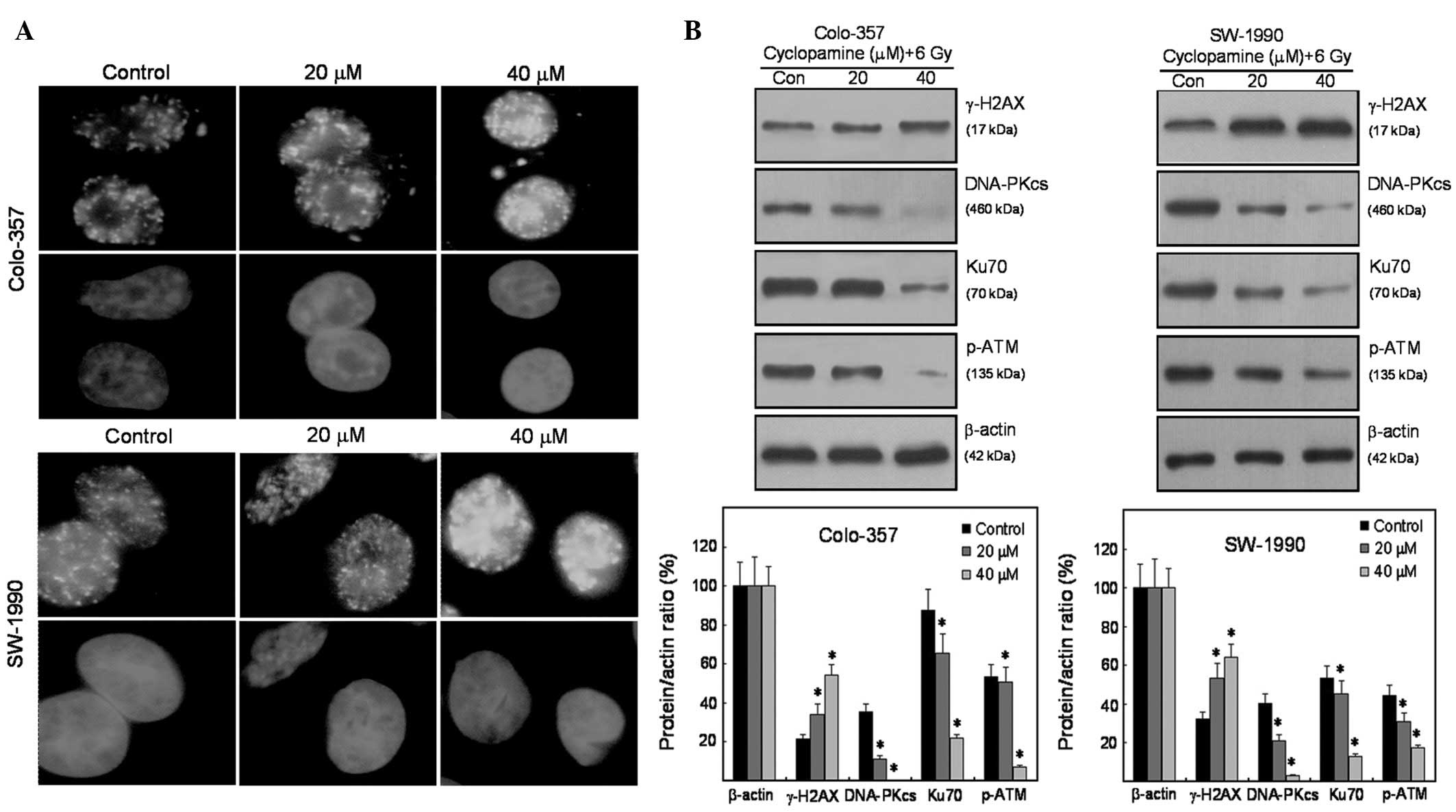Cyclopamine increases the radiosensitivity of human pancreatic cancer cells by regulating the DNA repair signal pathway through an epidermal growth factor receptor‑dependent pathway
- Authors:
- Published online on: July 30, 2013 https://doi.org/10.3892/mmr.2013.1605
- Pages: 979-983
Metrics: Total
Views: 0 (Spandidos Publications: | PMC Statistics: )
Total PDF Downloads: 0 (Spandidos Publications: | PMC Statistics: )
Abstract
Pancreatic cancer is an aggressive malignancy with a characteristic metastatic course of disease and resistance to conventional radiotherapy. As a result, the continual development of novel therapeutic agents is required to improve the current situation. In the present study, the effect of the hedgehog pathway inhibitor, cyclopamine, on cellular radiosensitivity was determined in K‑RASwt Colo‑357 and K‑RASmt SW‑1990 human pancreatic cancer cell lines using the clonogenic survival assay. Apoptosis and cell cycle distribution were detected using flow cytometry assay. Following irradiation (30 mins), residual double‑strand breaks were quantified by identification of γ‑H2AX foci of micronuclei and radiation‑induced γ‑H2AX, p‑ATM, DNA‑PKcs and Ku70 expression was analyzed using western blot analysis. The epidermal growth factor (EGF) and EGF receptor (EGFR) inhibitor, gefitinib, were utilized to determine the related mechanisms. The results revealed that cyclopamine treatment significantly reduced cell clonogenic survival but failed to induce apoptosis and radiation‑induced G2 arrest. Flow cytometry revealed that cyclopamine treatment enhanced γ‑H2AX foci in Colo‑357 and SW‑1990 cells exposed to irradiation. In addition, radiation‑induced p‑ATM, DNA‑PKcs and Ku70 were all inhibited. EGF also rescued pancreatic cancer cells from cyclopamine‑induced H2AX phosphorylation following irradiation. Thus, cyclopamine enhanced the radiosensitivity of human pancreatic cancer cells, in part, through an EGFR‑dependent pathway, indicating a rational approach in combination with radiotherapy.














